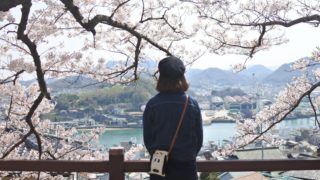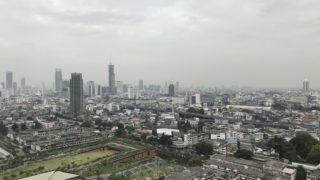Introduction
The Hiroshima dialect is a dialect of the Japanese language which is still spoken today in Hiroshima prefecture and the surrounding areas. It evolved from the dialects spoken by the people who originally settled in the area, and has retained many of the older features of the language which have been lost in more modern dialects. This article will explore the unique features of the Hiroshima dialect, its history, and why it is one of the few surviving dialects of the Japanese language.
Overview of the Hiroshima Dialect
The Hiroshima dialect has long been a part of Japanese culture and is still commonly used in the Hiroshima Prefecture. This dialect is a variant of the western Japanese language, which originated in the Edo period (1603-1868) and was spread by immigrants from the Chugoku region into other areas of Japan. Historically, this dialect has been associated with peace movements and is often seen as an emblem of resilience.
The Hiroshima dialect is characterized by its unique pronunciation, including two voiced consonants (“g” and “z”), various changes to base vowels, the use of high vowels (“i” and “u”) when talking about place names, and a strong intonation pattern that varies significantly from standard Tokyo-based Japanese. Additionally, many words are used exclusively in this dialect such as ‘mumemu’ for ‘unease’ or ‘kaiko’ for ‘injury’. Finally, certain verb forms uniquely associated with this language also exist such as the subjunctive (‘mama’) or imperative (‘yappari’) form.
In more recent times there has been a decline in use amongst young people who favor standard Japanese instead due to wider communication needs beyond their home towns. However despite this decline, methods such as preserving material through books, CDs and other resources have helped keep things alive for generations to come – showcasing how local languages can still carry special meaning even amongst large socio cultural changes.
History
The Hiroshima dialect has a long and important history in Japan. It was originally spoken in the city of Hiroshima by the original inhabitants of that area. The dialect has evolved and changed over time, but it still maintains its distinctive characteristics. In this section, we will explore the history of the Hiroshima dialect and how it has been passed down from one generation to the next.
Origins of the Hiroshima Dialect
The Hiroshima dialect is an indigenous form of Japanese, which is known as Kansai-ben. It is spoken in the Japanese city of Hiroshima and the surrounding area. The origin of the Hiroshima dialect is a mystery, but some linguists believe that it was created by immigrants who settled in the area during the Edo Period (1603-1868). Alternatively, it could be a product of local development.
Regardless of its background, until the twentieth century the Hiroshima dialect was widely spoken around the city. But with rising urbanization and standardization in education and media, traditional language patterns like those found in Kansai-ben have begun to disappear from many regions, giving way to what many call ‘standard’ Japanese.
Unique qualities have nevertheless been preserved in this surviving language, such as grammatical variations not typically seen in standard Japanese language forms — for example verb endings being used for particular gender identification instead of pronouns (e.g., “he” versus “she”), as well as its own vocabulary distinct from more common forms found throughout Japan today.
Impact of the Atomic Bomb on the Hiroshima Dialect
Although Hiroshima is now a thriving city, its native dialect, known as the Hiroshima-ben, continues to bear the effects of the atomic bomb. The language emerged from the local Yamato-dialect branch of Japanese and was originally spoken in the region for several centuries. Unfortunately, the atomic bomb had a devastating effect on this unique language, leading to a sharp decline in its usage and eventual disappearance among younger generations.
Most people agree that more than 70 percent of those who lived within two kilometers of epicenter were killed instantly by the blast. Of those who remained after 1945, many either permanently moved away from Hiroshima or chose to reeducate themselves through tougher pronunciations with standard Japanese words. As a result, far fewer people still spoke the dialect at home by 1960 compared to what was spoken before 1945.
The dialect survived despite these difficulties because elderly survivors and older generations continued using it in rural areas and small towns surrounding Hiroshima City. Thanks to various preservation efforts by language experts and local governments, there are now classes dedicated specifically to teaching this dying art form – something unheard of 30 years ago! It remains an important part of regional culture in western Japan and hopefully can continue to be preserved for future generations.
Features
The Hiroshima dialect is one of the few remaining dialects of Japanese that has remained fairly unchanged since the Meiji era. In this dialect, there are several distinct features that make it stand out. Some of the most prominent features of the Hiroshima dialect are the phonology, its vocabulary, and certain syntactic structures that are unique to this dialect.
Grammar and Syntax
The Hiroshima dialect is known for its carefully preserved grammar and syntax, as well as its wide range of regional vocabulary. The dialect is characterized by a strong use of honorific forms, gender-specific variances, and a formal speech style. It also utilizes traditional Japanese verbal endings and retains the use of negative forms.
Verbs are conjugated to the speaker’s gender, including for politeness. For example, speakers would change the verb form to be more polite when speaking to someone older and more important than them in a formal context. This practice has been adjusted over time with variations from standard Japanese accepted as natural or conventional in the dialect.
Suffixes are generally used for politeness with elders or respect for fellow citizens; in everyday conversation with younger peers, these suffixes may only be used when sending respectful greetings or expressing gratitude. Additionally, double negatives are followed using particles such as mo or sa instead of ni (不 ni --→ も mo). The Hiroshima dialect also possesses certain verb forms not found in any other regional dialects. An example is oiteoite-ru (おいておいてーる), which means “leave it; best disregarded” and is used to express feelings like “it’s none of my business” but in a very vague way.
Vocabulary
The Hiroshima dialect is spoken by the native people of Hiroshima in southwestern Japan, who are known for their distinct way of speaking which is often mixed with other regional varieties. The dialect is said to have survived since the late Edo period (1603–1868), though it has changed over time and been influenced by other dialects.
The vocabulary used by Hiroshima-ken natives consists primarily of Fujian, Chinese characters and borrowings from West Japanese. There are also some words and expressions unique to the Hiroshima area that were adopted following the modernization of Japan in the Meiji era in 1868. Examples include:
-Kazan (“Windy”), which implies both windy weather and one’s discontent due to unfavorable comments.
-Yoi (“Good”), a phrase meaning “it’s ok” or “it’ll do”.
-Kibun (“Feeling”), an expression used to describe one’s feelings or mood; it can also be used to mean expectation or agreement with someone about a particular topic.
-Migu (“Crowded”), an exclamation meaning “it’s crowded around here” or “I just got crammed between a lot of people”!
-Sakewari (“Separation”), which implies separation from someone during a festive moment such as New Year’s Day or Spring Festival.
-Tsubusebu (“Chuckle”), a phrase that expresses slight laughter while smiling, rather than open laughter such as guffawing.
Preservation and Revival
The Hiroshima dialect is a unique language that has existed for generations in Japan. It’s spoken by people living in Hiroshima and its environs and has been classified as an endangered language. While the dialect is still in use, attempts have been made to save it from extinction through preservation and revival efforts. This article will explore the ongoing preservation and revival efforts for the Hiroshima dialect.
The Role of Media
Media has played an important role in the preservation and revival of the Hiroshima dialect, which is spoken mainly by older residents of Hiroshima Prefecture. Through mediums like radio talk shows, television dramas, and documentaries, the language has been widely broadcasted across Japan. These shows feature characters speaking in the local dialect which helps to reinforce their use and normalize them as a valid way of speaking.
The most widely recognized example of language preservation can be seen in the popular Japanese television drama series “Hiroshima Mon Amour” which featured characters speaking in both standard Japanese and the local Hiroshima dialect. By making it accessible to a larger audience, this show helped to give people outside the region an appreciation of its unique cultural heritage.
Outside media sources have also contributed to revival efforts. For example, books written in the Hiroshima dialect have been released by major publishing companies throughout Japan allowing for wider access and greater visibility for readers who may not be familiar with this type of speech. Additionally, several smartphone apps dedicated solely to learning Hiroshima have also helped encourage people outside Hokuriku region from using this dialect as well.
Overall, media has played a major role in both preserving and reviving the unique speech patterns of Hiroshima Prefecture over time through increased accessibility and exposure beyond its borders. As such, it represents an invaluable tool for communicating with new generations who may otherwise be unable to experience this culture firsthand.
Efforts to Preserve the Hiroshima Dialect
The importance of preserving the Hiroshima dialect has been widely acknowledged. The Hiroshima Prefectural government funded a research project in 1971 to codify the Hiroshima dialect and study its history, linguistics, and literature. This was followed by the establishment of a coalition including scholars, media outlets, and citizens in 2000. This initiative is dedicated to recording, preserving and reviving the dialect, as well as reaching out to younger generations with their projects.
Organizations such as the Non-Profit Organization for Preserving Traditional Culture lead efforts to promote Hiroshima-ben by organizing lectures about the language, participating in local festivals and exhibits featuring dialects from across Japan, as well as publicizing language resources through books and websites. Furthermore, there are various other local initiatives from educational institutions such as The Hiroshima University Textbook Centre that offer pronunciation lessons for laypeople.
These wide array of initiatives have recently helped stemming outbound migration flows from Hiroshima Prefecture that were largely responsible for the decreasing numbers of native speakers of the Hiroshima dialect over recent decades. Thus significantly contributing to its survival up until today. All these commitments will hopefully ensure the thriving survival of this unique expression of local culture in times to come.
Conclusion
It is clear that the Hiroshima dialect is an important language that has withstood the test of time. While the language has gradually changed over the years, the distinctive characteristics of the dialect have remained intact. Many of the older generations speak exclusively in the Hiroshima dialect and the language continues to be passed down to younger generations. By recognizing the importance of this dialect and its unique characteristics, we can begin to appreciate the complexity of the Hiroshima culture and its preservation over many years.
Summary of the Hiroshima Dialect
The Hiroshima dialect remains distinct from other traditional dialects thanks to its isolated position and the historical resistance of its native speakers. It is characterized by a mix of Old Japanese, Ainu, Okinawan and Ryukyuan words as well as adopted Chinese characters. This combination of languages has been used both orally and written across four centuries, making the Hiroshima dialect a unique example of language adaptation over time.
Due to heavy exposure to modern Japanese culture in recent years, many young people are beginning to abandon the use of the Hiroshima dialect in favor of the more widely accepted form. To ensure that this rare form of speech does not become extinct, we must work together to preserve it by exposing younger generations to its use, providing resources that celebrate its importance in cultural history and honoring those who practice it daily. In doing so, we will ensure that the Hiroshima dialect remains alive for generations to come.








コメント